Vermont Landscape Designer Julie Moir Messervy
Landscape designer Julie Moir Messervy works to help people make their surroundings sing.
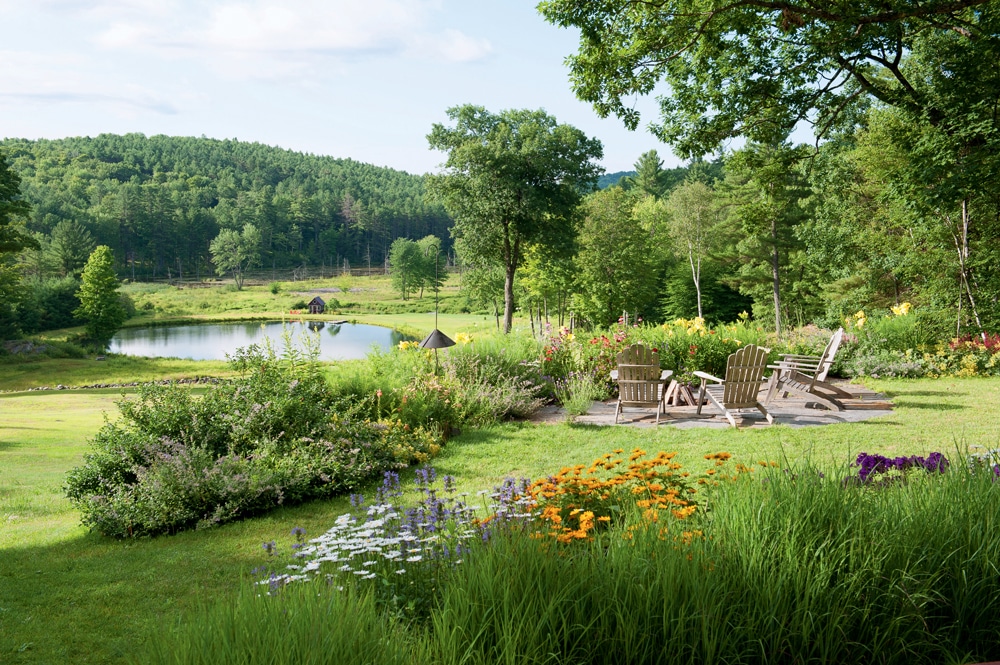
At Messervy’s home, a carefully sculpted and graded descent leads to a tiny, perfect pond that echoes the circle of Adirondack chairs above.
Photo Credit : Susan Teare
Photo Credit : Susan Teare
When Julie Moir Messervy, one of America’s most acclaimed landscape designers, gives me directions to the hillside home in southern Vermont she has shared with her husband, Steve Jonas, for almost 20 years, I pay attention. Getting there fits with one of her guiding principles: Make outdoor spaces promise “events”—since apparently the steep dirt road leading to their 206-acre homestead frequently surrenders to summer downpours. “You’ll find men working on it,” her email reads. “Be patient and they will let you by. Go up the hill 21/2 miles until you reach a triangle of weeds. Take the left fork…. It will feel like it takes forever, so call if you feel lost.”
I’ve come to see where Messervy incubates her ideas and “events” for city and town parks, college campuses, notable cemeteries, and public gardens, as well as the outdoor spaces of home owners around the world. She has done this work for more than 40 years, written nine books, and given countless lectures and workshops. Thousands of people can appreciate her eye for harmony and beauty when they stroll the famed Toronto Music Garden, or relax in Tenshin-en (Garden of the Heart of Heaven) at Boston’s Museum of Fine Arts, which she created with her former mentor, Japan’s revered garden master Kinsaku Nakane.
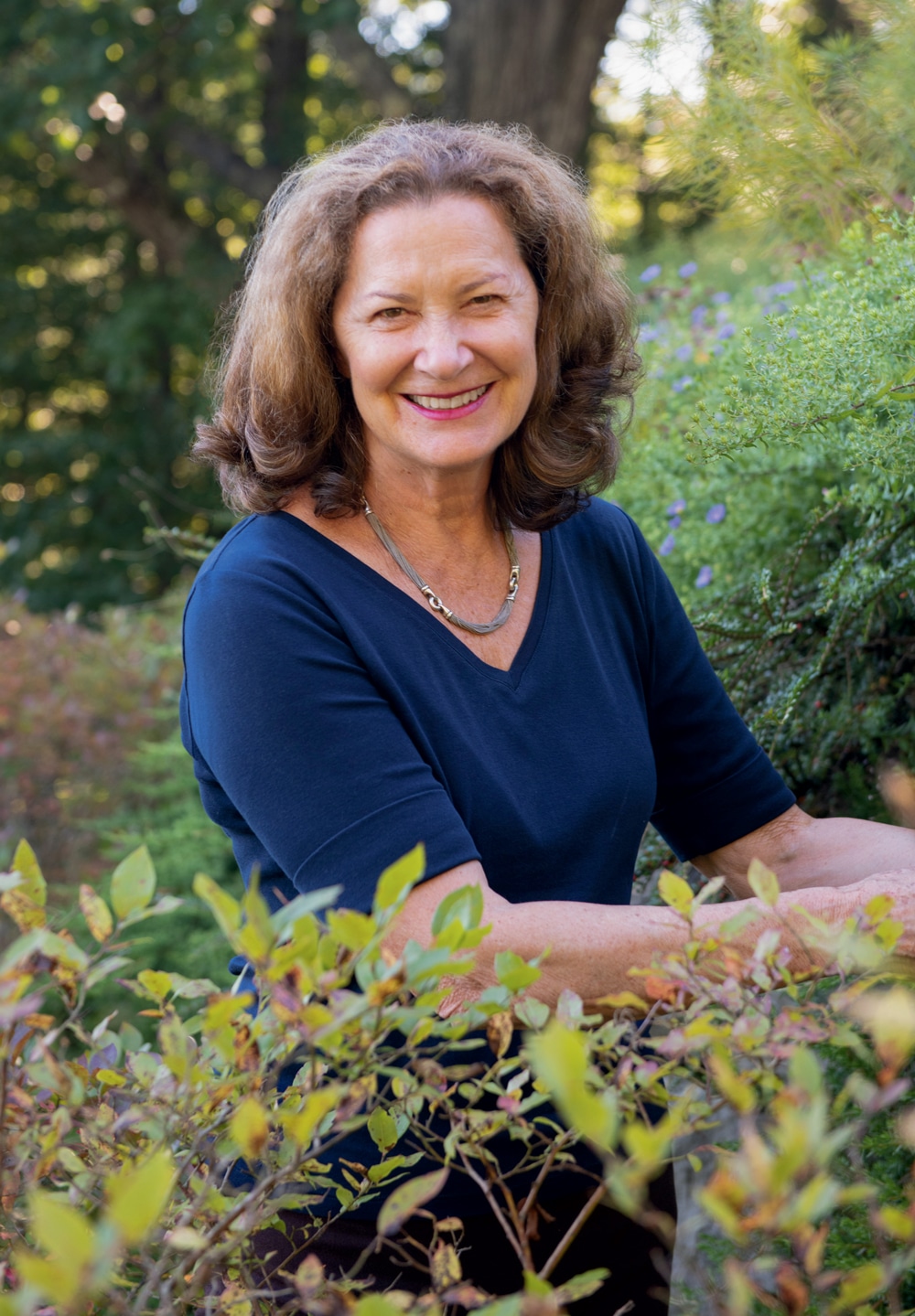
Photo Credit : Susan Teare
She often writes and speaks with the lyricism of a garden mystic: What should your garden look like? I see it as a place distilled from the elements of your imagination, your memories, and your dreams. She talks about her work as “fulfilling longings for space.” She views landscapes through the lens of seven spatial “archetypes”—sea, cave, harbor, island, promontory, mountain, sky—which she believes represent sanctuaries that people long for. Yet she accepts that she must also be useful. She says her editors have implored her to “pull it down to the ground.”
“I’m trying to make it more pragmatic and practical in my old age,” she says. Thus her books include Landscaping Ideas That Work, stuffed with 350 ideas to transform a yard from humble to beautiful. And at her nearby Bellows Falls studio, JMMDS, a small team of landscape architects and designers created an app that lets people drag hundreds of landscape elements onto a Google map of their land; it has been downloaded some one million times. She is like a magician revealing how to do the tricks.
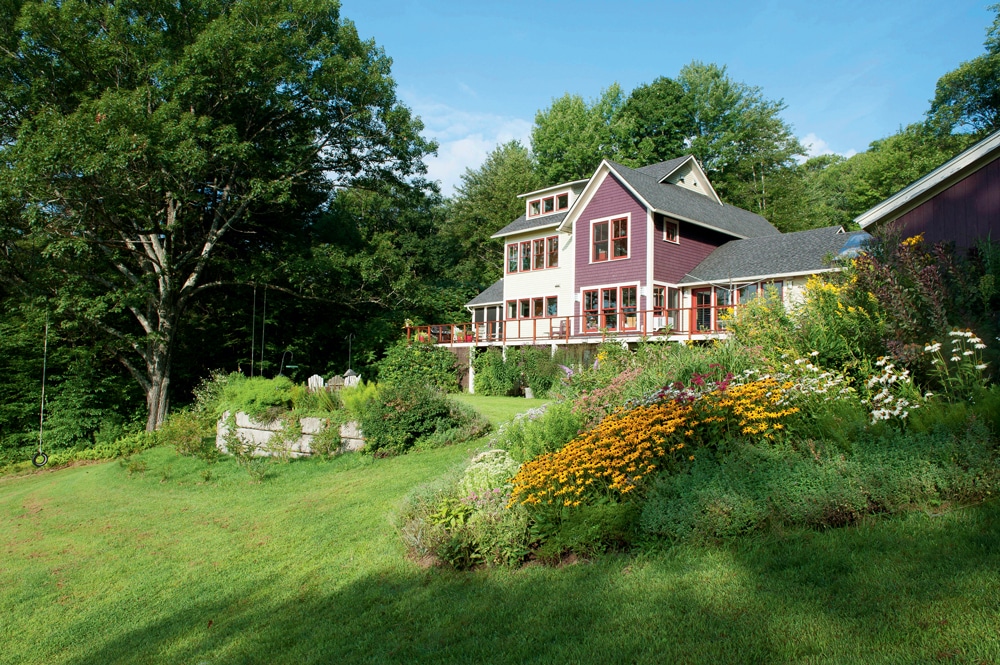
Photo Credit : Susan Teare
When I arrive at her home (and yes, it did seem like forever), Messervy ushers me to the screened porch that looks out to gardens, an expansive field with grasses and wildflowers that slopes to a distant circular pond and a tiny cabin, and beyond that, a shimmering beaver meadow that shelters many of the terrestrial and aquatic wild creatures that call Vermont home. She loves water, and nearly every day when it warms, she dives off the dock into 18 feet of pond that she shares with newts and turtles and whatever fish survive marauding mink, and swims the perimeter.
When she meets clients, one of the first things she asks is where they daydreamed as a child. That question, she tells me, is inspired by her own childhood and informs much of her work. She grew up one of seven children in the Midwest and Connecticut, needing to find refuges from the “happy chaos.” She found them in apple trees, fields, woods, streams. “I would pluck lilacs and suck the nectar,” she says. She studied at Wellesley and MIT, and traveled to Japan and fell under the spell of its gardens. “I thought, this is the work I want to do,” she says.
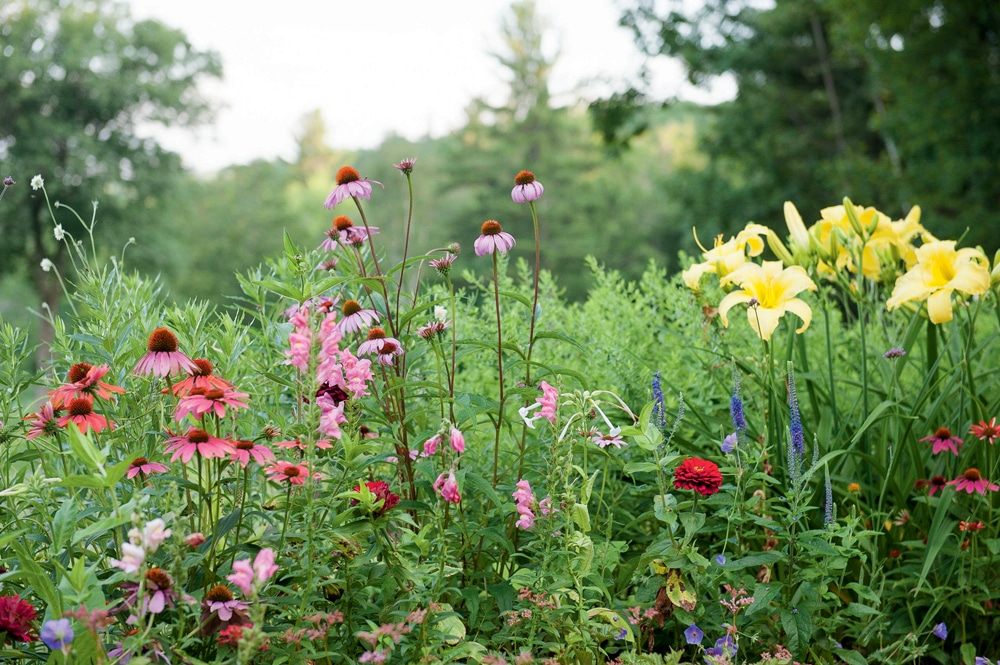
Photo Credit : Susan Teare
The sky is blue, and as we walk the land—what she calls her daily “stroll”—she points out how the circular pond compelled her to design curves and circles with nearly everything here, so the eye registers a soothing pattern. She says she looks at her land every day as if for the first time. She describes it as seeing the “language of the landscape,” and when she talks about this idea, her hands wave about, as if she is indeed conversing with the meadow.
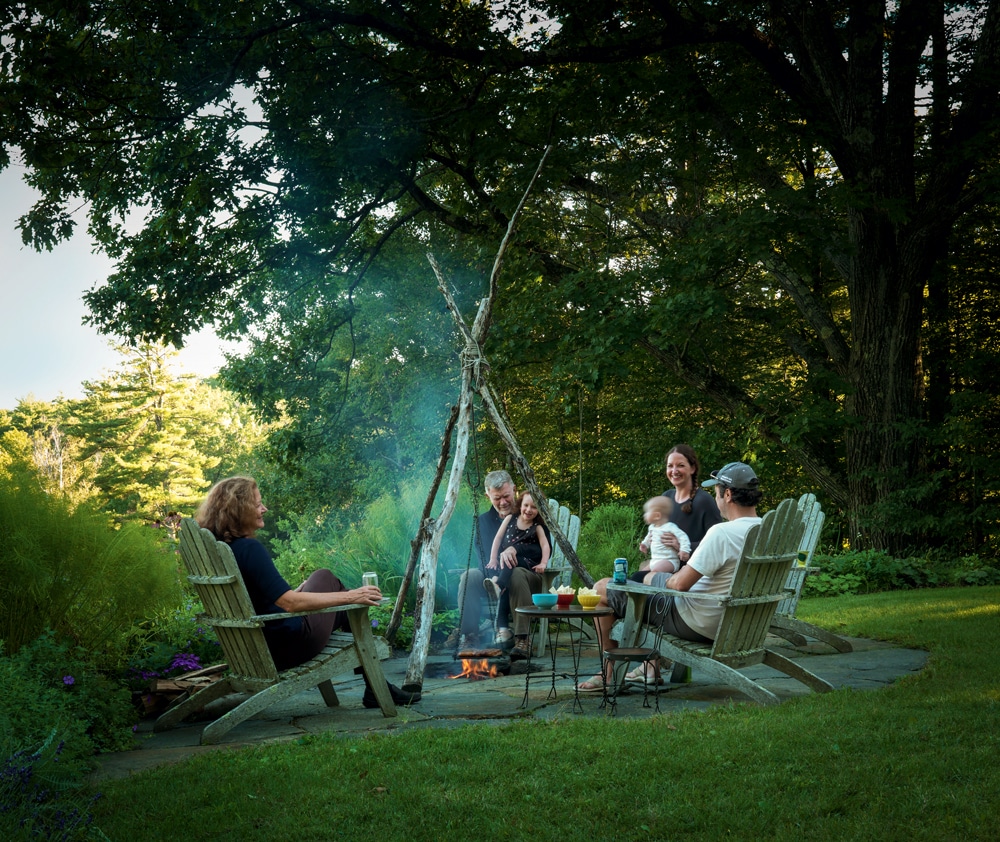
Photo Credit : Susan Teare
We stop to sit on a natural stone by a white oak tree that she loves. She wants me to understand what is spinning in her head. “I try to see the land with my mind,” she says, “but also with my heart.” That is the mystical gardener speaking. But then she “pulls it down to the ground.” She asks me to look at the trees near the cabin by the pond and tell her what is missing. It’s the first time she notices that something feels off to her. It needed another tree, she says.
“Where would you put it?” she asks. I knew I had a 50-50 chance on this one. “To the left,” I guess. “To the right,” she says. “It’s all about making it sing together. It’s an ensemble.”
DESIGN HIGHLIGHTS
♦ Toronto Music Garden:In 1999, on the waterfront of this Canadian metropolis, Messervy designed one of the most acclaimed small public parks in the world in collaboration with cellist Yo-Yo Ma. Each section of the three-acre park interprets one of the six movements in Bach’s Cello Suite No. 1 in G Major. Messervy spent hundreds of hours with the music, and asked all those who worked on the garden to listen and give impressions. The result is a city space unlike any other.
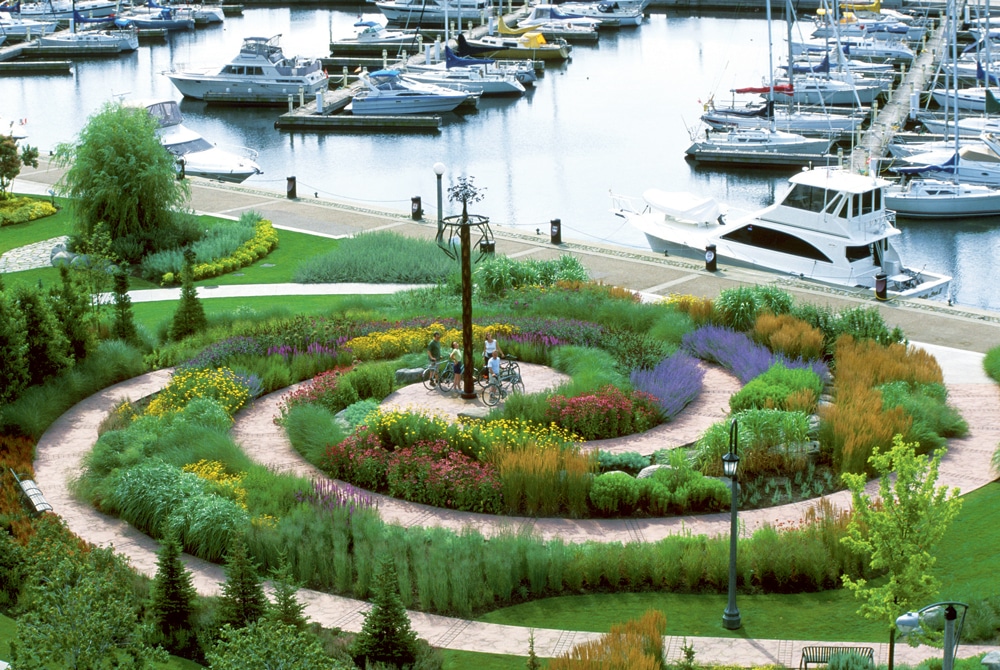
Photo Credit : Susan Teare
♦ Tenshin-en: Messervy worked with garden master Kinsaku Nakane to create this Japanese garden at Boston’s Museum of Fine Arts. The contemplative refuge delights visitors with traditional lanterns, a pagoda, and 70 species of plants.
♦ Little Falls Park: Nested within Greenville, South Carolina’s landmark Falls Park, a former college arboretum is graced by three acres of walkways, waterfalls, and intricate gardens with raised beds shaped like sunflowers.
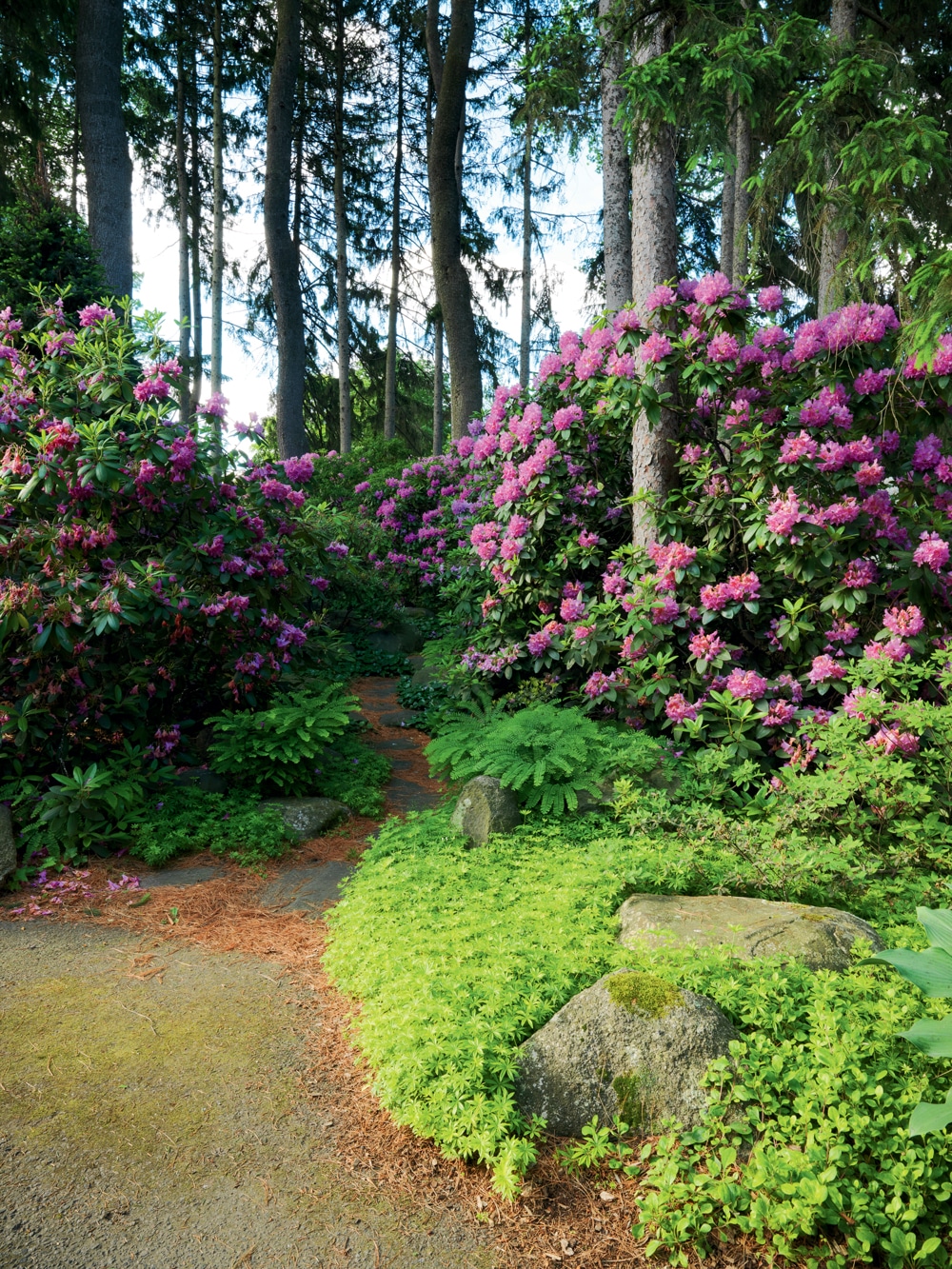
Photo Credit : Susan Teare
♦ Mount Auburn Cemetery: In one of the prettiest spots in this historic cemetery in Cambridge and Watertown, Massachusetts, a large stone amid towering spruces, rhododendrons, andromeda shrubs, and perennials creates a natural landscape distinct from the monuments around it.
To learn more about Julie Moir Messervy, and to see her work and that of her studio associates, go to jmmds.com and homeoutside.com.
Mel Allen
Mel Allen is the fifth editor of Yankee Magazine since its beginning in 1935. His first byline in Yankee appeared in 1977 and he joined the staff in 1979 as a senior editor. Eventually he became executive editor and in the summer of 2006 became editor. During his career he has edited and written for every section of the magazine, including home, food, and travel, while his pursuit of long form story telling has always been vital to his mission as well. He has raced a sled dog team, crawled into the dens of black bears, fished with the legendary Ted Williams, profiled astronaut Alan Shephard, and stood beneath a battleship before it was launched. He also once helped author Stephen King round up his pigs for market, but that story is for another day. Mel taught fourth grade in Maine for three years and believes that his education as a writer began when he had to hold the attention of 29 children through months of Maine winters. He learned you had to grab their attention and hold it. After 12 years teaching magazine writing at the University of Massachusetts-Amherst, he now teaches in the MFA creative nonfiction program at Bay Path University in Longmeadow, Massachusetts. Like all editors, his greatest joy is finding new talent and bringing their work to light.
More by Mel Allen

